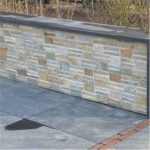Reviving History The Timeless Beauty of Colonial Cultured Stone
Introduction Colonial cultured stone has long been admired for its timeless beauty and classic appeal. This style of architectural stone has a rich history, dating back to the colonial period in America when European settlers first arrived on the shores of the New World. Today, colonial cultured stone continues to be a popular choice for homeowners and builders looking to add a touch of historic charm to their properties. In this article, we will explore the origins of colonial cultured stone, its characteristics, and its enduring popularity in modern architecture. Origins of Colonial Cultured Stone Colonial cultured stone draws its inspiration from the architecture of the colonial period in America, which spanned from the early 17th century to the late 18th century. During this time, European settlers brought with them a variety of architectural styles from their homelands, including English, Dutch, French, and Spanish influences. These styles were adapted and combined to create a uniquely American colonial architecture that reflected the cultural diversity of the early colonies. One of the defining features of colonial architecture was the use of natural stone for building materials. However, in the New World, natural stone was not always readily available or affordable. To overcome this challenge, early settlers developed techniques for creating artificial stone that mimicked the appearance of natural materials. This artificial stone, known as cultured stone, allowed builders to achieve the look of traditional masonry without the cost or logistical challenges associated with natural stone. Characteristics of Colonial Cultured Stone Colonial cultured stone is characterized by its rustic, weathered appearance and earthy color palette. Common colors used in colonial cultured stone include shades of gray, brown, tan, and red, which mimic the hues of natural stone found in the colonial-era buildings. https://www.fs-slate.com/step-stone/ of colonial cultured stone is typically rough and irregular, with varying sizes and shapes that create a sense of authenticity and age. One of the key features of colonial cultured stone is its versatility. It can be used in a variety of architectural styles, from traditional colonial homes to more contemporary designs. Colonial cultured stone is often used to create accent walls, fireplaces, and exterior facades, adding depth and visual interest to a building's appearance. Its ability to blend seamlessly with other materials, such as wood, brick, and stucco, makes it a popular choice for architects and designers seeking to create a cohesive and harmonious look. Enduring Popularity of Colonial Cultured Stone Despite its historical roots, colonial cultured stone remains a popular choice for homeowners and builders in the 21st century. Its timeless appeal and classic elegance make it a versatile option for a wide range of architectural styles, from traditional to modern. The durability and low maintenance requirements of colonial cultured stone also contribute to its enduring popularity, as it offers the aesthetic benefits of natural stone without the drawbacks of cost and upkeep. In addition to its aesthetic qualities, colonial cultured stone is also valued for its sustainability. By using artificial stone instead of natural resources, builders can reduce their environmental impact and conserve valuable natural resources. Many manufacturers of colonial cultured stone also offer products made from recycled materials, further enhancing the eco-friendly appeal of this building material.  Conclusion Colonial cultured stone is a classic and timeless building material that continues to captivate homeowners and builders with its historic charm and versatile appeal. Drawing inspiration from the architecture of the colonial period in America, colonial cultured stone mimics the look of natural stone while offering the practical benefits of artificial materials. With its rustic textures, earthy colors, and enduring popularity, colonial cultured stone is sure to remain a staple in architectural design for years to come.
Conclusion Colonial cultured stone is a classic and timeless building material that continues to captivate homeowners and builders with its historic charm and versatile appeal. Drawing inspiration from the architecture of the colonial period in America, colonial cultured stone mimics the look of natural stone while offering the practical benefits of artificial materials. With its rustic textures, earthy colors, and enduring popularity, colonial cultured stone is sure to remain a staple in architectural design for years to come.